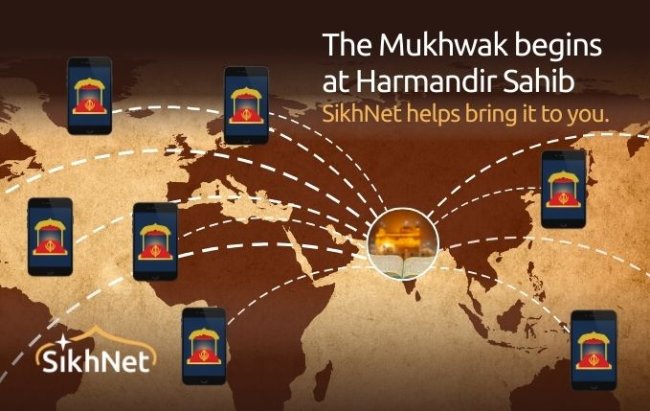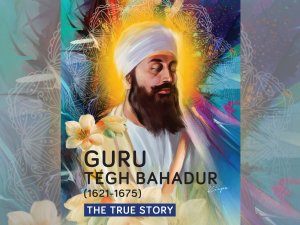
Reviving the Sarbut Khalsa Tradition
Wednesday, 30 May 2012: The decision making tradition of Sarbat Khalsa was evolved during the first half of the 18th Century. It is likely to be revived and further developed through seminars like those arranged by the Sikh Research Institute and supported by the Sikh Council UK over the weekend of June 16 and 17, 2012. The main event on Sunday 17 June, will be at The Oxford Union, University of Oxford.
The background is the need to promote the decision making process within umbrella Sikh organisations like the Sikh Council UK, by learning from the model of Sarbat Khalsa evolved during the first half of the 18th Century. This is only possible by understanding what the concept means in this day and age. For example, which decisions need to be taken by consensus and which can be taken by the senior office holders of Sikh institutions and organisations, on their own.
Are there historical examples when Sarbat Khalsa did not deliver a consensus based decision? Are there some current examples when the consensus based approach would have been helpful? Some possible examples are: the Nanakshahi Calendar issue, the Shaheedi memorial at Darbar Sahib, and the case of Balwant Singh Rajoana.
Akal Takhat Sahib invited organisations and individuals to give views and many organisations in the diaspora, including the Sikh Council UK, did that in writing. However, it was never made clear how consensus was reached. Similarly people are now being invited to comment on the Anand Marriage Act without being clear about how the information will be used.
My interim response (below) to some similar queries following a short column article in UK's Panjab Times weekly, is based on a study of the 18th Century trials and tribulations of the Khalsa Panth, also remembered in the daily Sikh supplication (Ardaas).
Sarbat Khalsa is an expression of Panthic solidarity. That is so even when there are internal disagreements. In the 18th Century Khalsa freedom struggle, despite internal disagreement about whether or not to invade the well fortified city of Kasur, (triggered by the appeal of a Brahmin whose wife was in the Nawab’s captivity) the overriding concern was for Panthic unity and it ensured final victory. (The campaign is well described in Sardar Ratan Singh Bhangu’s Sri Guru Panth Prakash under the heading “Saakhi Prithmai Kasur Maarnai ki” in the year 1760 CE).
To my mind, Sarbat Khalsa is not, in itself, the decision making mechanism but an important end product of the consultation process. Things have become much more complicated in the 21st Century, but we also have the tools and skills to do research and base discussions and decisions on that research. Success or failure would depend on the quality of the research (equivalent to field intelligence in the 18th Century freedom struggle) and the spirit of working together for the ascendancy of the Khalsa Panth (Panth di chardhi kalla).
Great Khalsa personalities like Nawab Kapur Singh, played an important catalytic role in the Sarbut Khalsa tradition without detracting from the grassroots (Sangat) consensus aspect in decision making. Their own "authority" for decision making on their own as leaders or “office holders”, was residual. It grew in proportion to the respect and trust they won over a period of time.
These great leaders of leaders, were also talent spotters and promoted leadership qualities in those around them. Jassa Singh Ahluwallia was a stable boy at Darbar Sahib and was spotted by Nawab Kapur Singh. At some point in Sikh history, this “stable boy” in the service of the Khalsa warriors, sat on the throne of Hindostan. Other sardars grew in stature during this period through what can only be described as "team-working" by equals; very independent minded Khalsa personalities. The very mention of the names of those like Sardar Baghel Singh sent a shiver down the spines of hardened Mugal warriors and rulers.
In the modern context, we can draw lessons from the Khalsa field strategy of 18th Century. Consensus is achieved through factual information gathering on a topic or campaign (field intelligence). Draft proposal is based on that information. Consultation and drafting changes are made and final approval is given by Sangat representatives. Success or failure depends on the quality of the intelligence gathered. If the first draft "proposal" is not refused at the outset, then there is a good chance of the proposal or plan of action being adopted in due course, following discussion.
A draft proposal in today’s world, pre-supposes a research panels of Sikh scholars in diverse fields and policy experts. Regrettably, Sikh institutions, including successive Akal Takht jathedars, have failed in this respect. For that reason, we are where we are today.
Taking decisions on the basis of a Jaikara i.e. a Sikh religious slogan started by some one in a loud voice "Bolay so nihaal" and responded to in unison by those gathered "Sat Sri Akal", is a sure recipe for failure. A Jaikara interrupting a katha or Sangat presentation, should be regarded as an insult to (i.e. be-adbi of) the Sangat and the Guru. A Jaikaras should only be allowed towards the conclusion of proceedings, following the Ardaas.
Today, organisations are started by dedicated community activists with a desire to do something for the community. To start with, these activists are content to call themselves “nishkam sevadars”. Regrettably, in the Sikh community, the desire to lead has a tendency to become permanent due to personal ambition. In fact, such is this desire to lead and remain in control that the original aims of organisations to remain part of the Khalsa Panth by working towards Panth di Chardhi Kalla, are forgotten.
Also, with one person assuming almost dictatorial role, it means that those with ability and diverse skills are kept away. The single “leader” surrounds himself with sycophantic poodles! Without genuine team-working of equals, an organisation becomes entirely dependent on one person. Such organisations are starved of fresh ideas and the complementary skills needed in today’s world. They have no continuity and run into the sands when the singleton “leader” is no longer active, or passes away.
The approach of organisations started and “owned” by permanent leaders, is “top down”. That is not the Khalsa way. All gurudoms, deras and sant sampardais automatically fall into this category because they have one "spiritual" head whose command is the law for the followers (chelas). Of course, there is need for men and women with outstanding abilities and skills; but the Khalsa way is the Sangat (congregational) way i.e. grassroots or “down-upwards” in the Sarbat Khalsa tradition, perfected during the most challenging period in Sikh history. The foundation for this approach had been laid during the person-Guru period (1469 to 1708) and perfected by Guru Gobind Singh.
Organisations have specific aims and objectives. One individual or organisation cannot possibly cover all aspects of a community’s needs. That means that at national and global levels, there will always be a need for co-ordinating umbrella organisations. Every Sikh organisation, including gurdwaras, the centres of Sikh community life and holders of Sangat’s funds, must accept that need for national and international level representation of Sikh issue and concerns. More so the organisations founded and led by individuals, who, otherwise, would have done much for the community in different fields.
All that we study in management and decision making theories today, was actually practised - maybe due to collective instinct for survival - by 18th century Khalsa leadership, which, kept Panthic solidarity in the forefront.
This topic needs much thought and development in future seminars like those organised by the Sikh Research Institute.
Gurmukh Singh
e-mail: [email protected]
Copyright © : Gurmukh Singh UK






